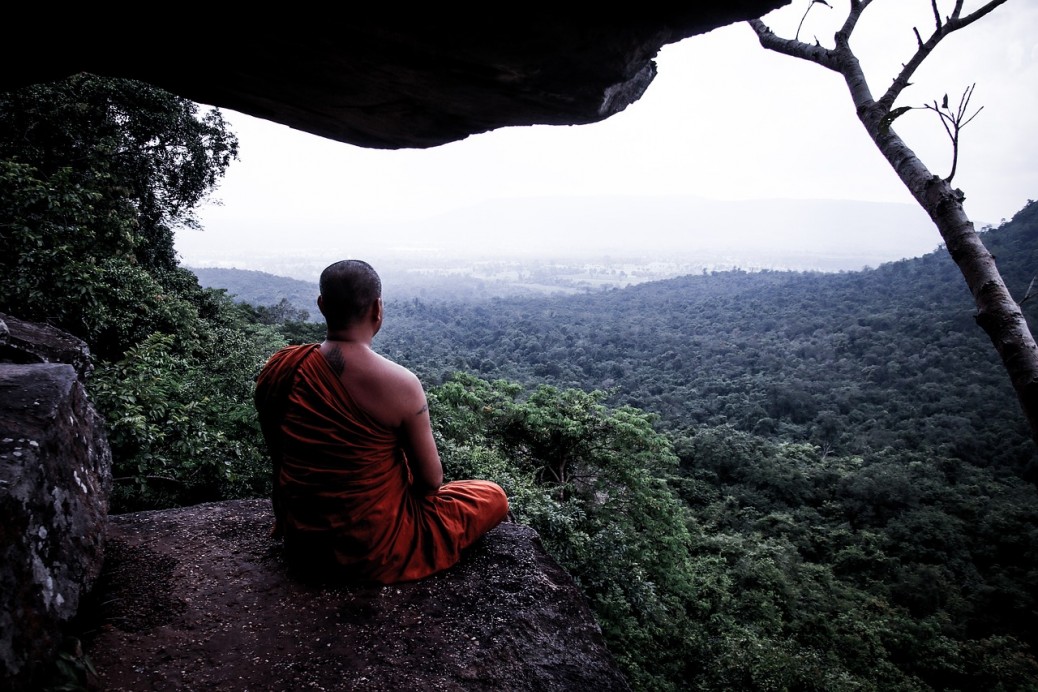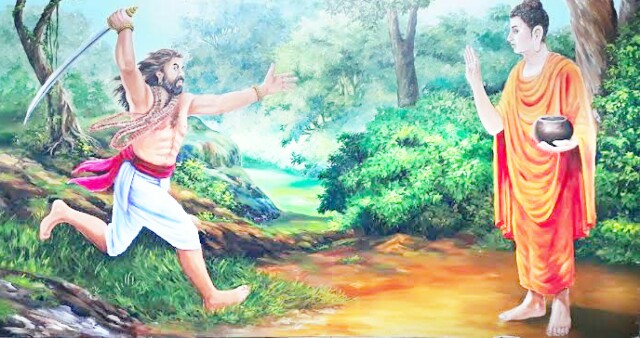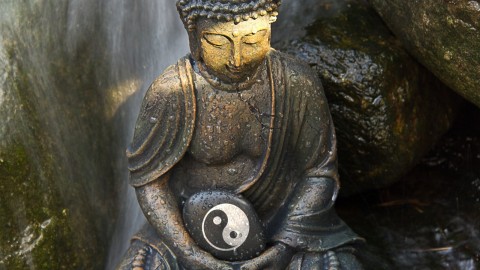Joshu went to a place where a monk had retired to meditate and asked him: “What is, is what?”
The monk raised his fist.
Joshu replied: “Ships cannot remain where the water is too shallow.” And he left.
A few days later Joshu went again to visit the monk and asked the same question.
The monk answered the same way.
Joshu said: “Well given, well taken, well killed, well saved.” And he bowed to the monk.
Move Into Samadhi
Question was the same, the answer was the same. Then what is the difference? Monk took the hint from Joshu – when Joshu told him – Ships cannot remain where the water is too shallow.
When Joshu said this, he gave him a hint – To go inside of yourself doesn’t stop at shore, start your – “inner journey”, he simply means that you have looked at one aspect of the journey in your life called “outer”, now try to look at another aspect of the journey called “inner”. You have been running after money, now run after meditation. You have been running after power, now run after God. Both are running. Right now instead of outer you are running after meditation. That’s why you are at shore and not able to go deep inside you.
And when you stop running then real meditation happens.
Meditation is a state of no-mind. Meditation is a state of pure consciousness with no content. Ordinarily, your consciousness is too full of rubbish, just like a mirror covered with dust. The mind is a constant traffic: thoughts are moving, desires are moving, memories are moving, ambitions are moving – it is a constant traffic! Day in, day out. Even when you are asleep the mind is functioning, it is dreaming. It is still thinking; it is still in worries and anxieties. It is preparing for the next day; an underground preparation is going on.
This is the state of no meditation – just the opposite is meditation. When there is no traffic and thinking has ceased, no thought moves, no desire stirs, you are utterly silent – that silence is meditation. And in that silence truth is known, and never otherwise. Meditation is a state of no-mind.
And you cannot find meditation through the mind because the mind will perpetuate itself. You can find meditation only by putting the mind aside, by being cool, indifferent, unidentified with the mind; by seeing the mind pass, but not getting identified with it, not thinking that “I am it.”
Meditation is the awareness that “I am not the mind.” When the awareness goes deeper and deeper in you, slowly slowly, a few moments arrive – moments of silence, moments of pure space, moments of transparency, moments when nothing stirs in you and everything is still. In those still moments you will know who you are, and you will know what the mystery of this existence is.
Sitting silently, doing nothing, the spring comes and the grass grows by itself.
So meditation has two meanings. That’s why in India we have two words for it: dhyana and samadhi. dhyana means the temporary meditation, arbitrary meditation; samadhi means you have come home, now meditation is not needed. When even meditation is not needed, one is in meditation – never before it. When one simply lives in meditation, walks in meditation, sleeps in meditation, when meditation is just one’s way of being, then one has arrived.
With the Joshu’s hint monk moved from Dhyana to Samadhi
Learning from the story Fist: Move Into Samadhi
Experience Learning
What Is Samadhi?
Samadhi is the ultimate state of being, the ultimate flowering of consciousness. Man lives in the mind, animals live below the mind. Samadhi is the state above the mind where thinking disappears, and with the thinking, all wavering of consciousness disappears also.
Thinking is like ripples in a lake, and because of the ripples, the reflection cannot be true; the moon is reflected but the ripples distort it. God is reflected in everybody, we mirror him, but our mind is so full of thoughts, wavering, clouds, that whatsoever we come to see is no more the same; it is not that which is. The mind has imposed its own thoughts upon it, it has interpreted it, and all interpretation is a distortion. Reality needs no interpretation; it needs only reflection. There is no point in interpreting, the interpreter goes on missing the point.
If you see a rose flower, it is there: there is no need to interpret it, there is no need to dissect it, there is no need to know about its meaning. It is its meaning. It is not a metaphor, it does not stand for something else. It is simply there! It is reality, it is not a symbol. A symbol needs to be interpreted, a dream needs to be interpreted. So psychoanalysis is right because it goes on interpreting the dreams, but philosophers are not right because they go on interpreting the reality. A dream is symbolic: it stands for something else; an interpretation may be helpful to find out what it stands for. But a rose flower is a rose flower; it stands only for itself. It does not indicate anything else, it is not an arrow towards anything else; it is self-evident.
So is reality, but our mind is in the habit of interpreting. Thinking is nothing but a habit of interpreting. When thinking disappears the lake is silent, calm and quiet. Then there are no more waves, no more ripples – nothing is distorted: the moon is reflected perfectly.
So Samadhi means the ultimate state of pure reflection.
Buddha even uses the word right for samadhi. That has to be understood. He says: “right realization of truth.” One wonders, can there be wrong realization of truth? Buddha says yes. Samadhi is the ultimate state when all desires disappear, all thoughts disappear, the whole mind disappears. You are in a state of no-mind. But this can happen in two ways.
You can fall into a deep sleep, so deep that there are no longer even dreams – the mind has disappeared. In deep sleep there is no desire, there is no mind, no thought. But this is not samadhi – this is a coma!
Buddha says this is a wrong kind of meditation and a wrong kind of samadhi. Right samadhi means you have to be without mind, fully awake; in wakefulness, thoughts have to disappear. It is easy to fall asleep, to fall into a deep coma, in a kind of hysterical fit and be without mind; but that is falling below mind not transcending mind. Right samadhi is a transcendence: you go beyond mind, but you are fully alert, aware. Only then is samadhi right – when it grows in awareness and when awareness grows through it. When you become enlightened you have to be absolutely awakened; otherwise you missed at the last step.
Tags: Art Of Transcending Become Desireless Hopelessness Move Into Samadhi Simple Awareness Without Judging










